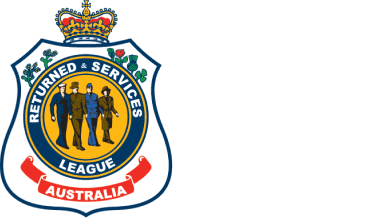The dust had hardly settled on World War II when Australians were sent back into the field as peacekeepers, helping to restore calm to the world’s hotspots.
Our first post-war foray into helping soothe geopolitical tensions was close to home, when Australians joined the United Nations military observers headed to the Netherlands East Indies (today Indonesia) in 1947, as conflict erupted between the Dutch colonial government and its military, and Indonesian republicans.
Since then, Australian peacekeepers have been continuously deployed to every corner of the world to help restore civility and rebuild troubled nations.
From the rugged mountains of Kashmir, to the sand cliffs of Sinai, Cambodia, Korea, West New Guinea, Cyprus, Bougainville, Haiti, Yugoslavia and the Solomon Islands, Australians have never blinked when asked to lend a hand.
Australian peacekeepers have had an active presence in the Middle East since 1956, our longest-running mission, and have supported peacekeeping missions in the most troubled nations of Africa: Southern Rhodesia(now Zimbabwe), the Congo, Uganda, Namibia, Western Sahara, Somalia, Mozambique, Sierra Leone, Ethiopia and Eritrea, South Sudan, Mali and notably Operation Tamar in Rwanda in 1994.
Multidimensional role
The peacekeeping force can be made up of military, police and civilian personnel, and peacekeeping missions are broadly described as impartial, multinational, military-based in support of United Nations efforts.
But in reality, peacekeeping is a complex, multidimensional role, often conducted in highly volatile environments, as the 700 Australian peacekeepers discovered when they arrived in Rwanda in 1994, in the wake of genocide.
Between 500,000 and 800,000 Rwandan Tutsi people had been brutally slaughtered by rival Hutu militia using machetes and rifles. The bloodshed was visibly confronting, and the conflict was still playing out in some villages. Some Australian peacekeepers were witness to a violent and horrifying massacre in the Kibeho refugee camp, and lucky to escape with their lives.
The International Force East Timor (INTERFET) deployed to Dili in September 1999 were similarly confronted with harrowing scenes after pro-Indonesia militia unleashed a bloody battle in response to the Timorese people’s fight for independence.
Lieutenant Colonel Tim McOwan was one of the first on the scene and recalled how the port was “like a scene from Hades, there were piles of what appeared to be burning rags and belongings, there was human excrement, families crying, people clearly disturbed and frightened.”
Restoring and rebuilding
The Australians’ role was to restore peace and security, protect and support United Nations teams carrying out the task of rebuilding the tiny nation and deliver humanitarian aid.
Led by General Sir Peter Cosgrove AK, CVO, MC, INTERFET remains Australia’s largest peacekeeping mission.
“When we were flying in, we looked out the window and all we could see were pillars of smoke coming out of what was once a tiny, but beautiful city,” he said in an interview reflecting on that remarkable chapter of Australian history.
"I look back on it now and think ‘What an honour’. I remember leaving Dili and being cheered onto the ship and I thought, ‘Isn’t it great that these people who've been traumatised and have every reason not to like military people are saying farewell in this spontaneous way’."
General Sir Peter Cosgrove AK, CVO, MC
Australians have earned a reputation for their willingness to roll up their sleeves and get the job done, no matter what the task.
In Rwanda, more than 300 of the Australians deployed were medical personnel, providing critical care to those who had survived the genocide.
When Australians were sent to Iraq in 1988 as part of the United Nations Iran-Iraq Military Observers Group (UNIIMOG) to oversee the Iran-Iraq ceasefire, one of many tasks was facilitating the repatriation of war dead.
Some of the deceased were as young as eight years old, and some had been mummified or semi-mummified by the salt marshes. Between August 1988 and June 1989, Iran and Iraq exchanged 2,500 bodies with the help of Australian peacekeepers.
Beyond military might
On any given day, peacekeepers will support the facilitation of fair elections and political process, protect civilians in times of unrest, assist in disarmament and the re-integration of combatants into society following conflict, and protecting and promoting human rights while restoring the rule of law.
Beyond military power, the commitment of peacekeepers to rebuilding shattered nations and promoting human rights is vital to the global community, with positive effects that last for generations.
Learn more about peacekeeping, peacemaking and peacebuilding
Peacekeeping, peacemaking, and peacebuilding represent distinct but interconnected efforts in the realm of military operations aimed at promoting stability and preventing or resolving conflicts.
Peacekeeping involves the deployment of troops to maintain peace and security in areas affected by conflict. United Nations peacekeeping missions, such as in Cyprus, demonstrate this by deploying troops to monitor ceasefires and create conditions for diplomatic solutions.
Peacemaking involves active efforts to halt ongoing conflicts through diplomatic means. The 1995 Dayton Agreement in Bosnia, facilitated by the international community, is an example. Military forces may be deployed to enforce agreements and provide a secure environment for peace talks.
Peacebuilding focuses on the long-term development of societies emerging from conflict. The military may contribute by supporting reconstruction and governance efforts. For instance, in post-conflict Afghanistan, military personnel were involved in infrastructure development and training local security forces.

